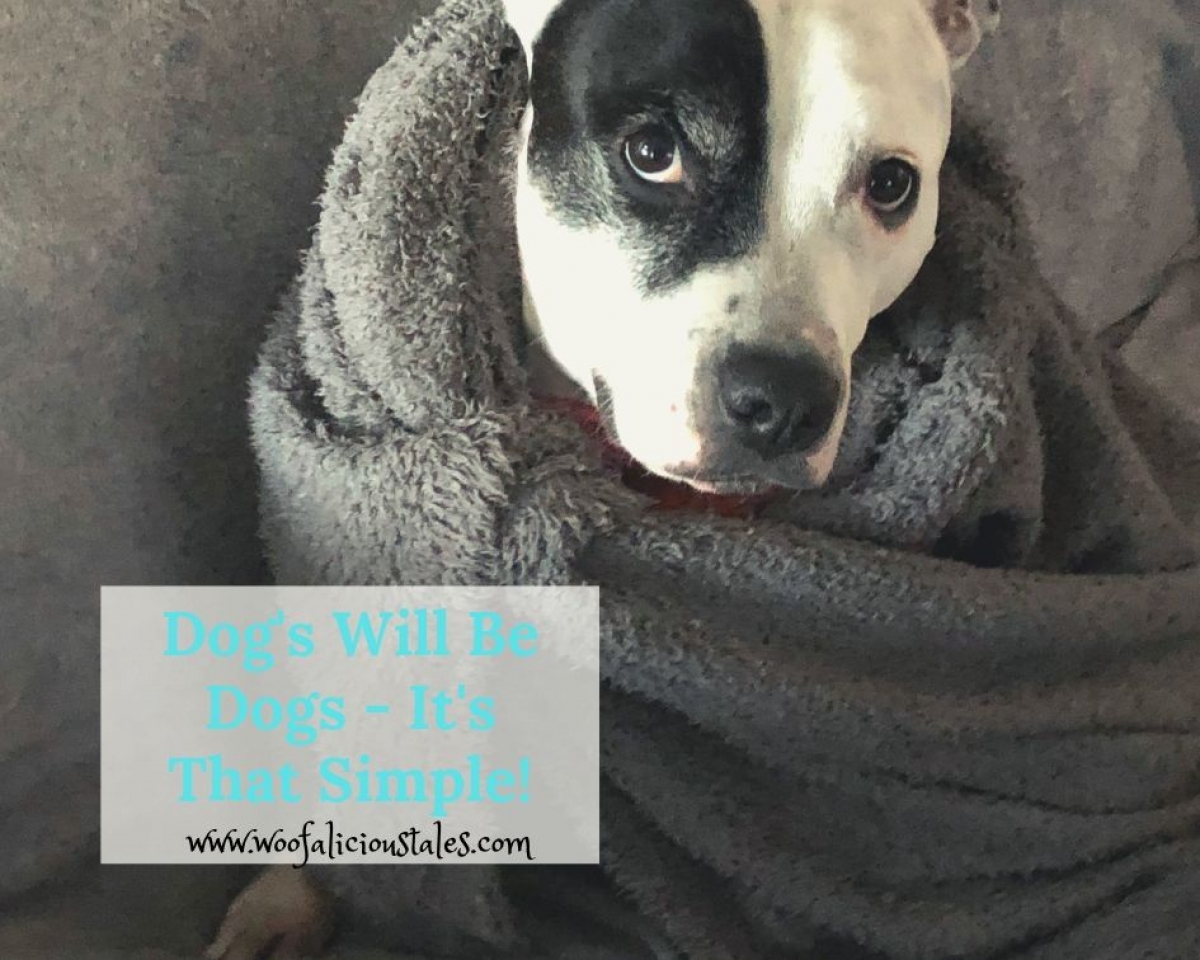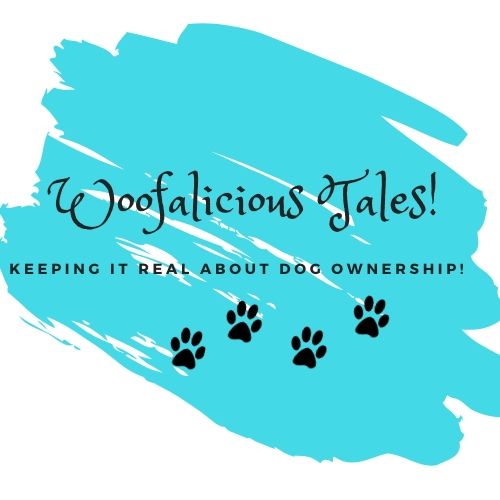
Hey Woofa’s,
I was speaking with a customer the other day and she was telling me how her 13 year old Bichon was being such a ‘cow’ to their new doberman pup.
She told me how the older dog was snapping at the pup and wouldn’t let the pup near her. How the older dog was not responding well to the pup at all. The older dog wouldn’t eat or drink out of any dish the pup had used!
My customer was horrified by the fact that she had to intervene and pull them apart just that day. (NO they weren’t fighting or even biting each other the pup was trying to play bite and the older dog was having none of it).
I sat there and just listened to everything she was saying and I was nodding all the while.
I said to her that everything you have just said to me about the dogs, is NORMAL!!! She looked at me like I was crazy.
I repeated, that it was normal for her dogs to act the way they were because the whole dynamic of both of their worlds had been disrupted.
She just has to let her dogs be dogs – it’s that simple. I said to give them a few weeks or so to sort out a new dynamic and a new routine and they will be fine.
I asked my customer to try to think of the situation from her dog’s perspectives (as much as we can).
BICHON’S TAKE ON THINGS!
- At 13 years old, she has some ailments but is getting around alright;
- she has been an only dog for 13years;
- she suffers from a bit of anxiety;
- has never had to compete for the families attention;
- she has her routine all set for each day;
- the family is her pack;
- she can eat at her free will;
- drink whenever she needs to;
- the family know her enough to read the signs when she needs something;
- she feels safe in her environment;
- she guards the pack and the property.
I’m sure there’s much more but these are just a few things to get us thinking about this situation.
DOBERMAN PUP’S TAKE ON THINGS!
- Pup is roughly 10 weeks old;
- she has just been taken from her mum and litter mates (at the right age);
- puppy has teeth and wants to chew everything;
- she has been put into a new pack;
- she is young and needs to learn the pack rules;
- who is leader of the pack;
- where does my food and water come from;
- when and where do I toilet;
- who to play with, when to play, where to sleep etc;
- what is my role here
- is this other dog a litter mate etc?
THE BEHAVIOURS!
- Oder dog is growling at the pup;
- she is snapping at the pup;
- won’t eat or drink out of a bowl the pup has used;
- sits on human mum’s lap but doesn’t like it when pup tries to as well (just turns away from the pup).
- Pup sees older dog as new and chewable;
- she jumps at older dog;
- puppy already towers over older dog;
- she doesn’t know the pack dynamic yet.
What I want to make clear is that NO-ONE is at fault here, it’s just a matter of understanding WHY the dogs are doing what they are doing.
MY EXPLANATION!
I mentioned to my customer that the older dog growling and snapping towards the pup when it gets in her face or near her is normal because I’ve seen it with my own dogs. Especially when there is such a huge age difference.
This behaviour is exactly how Isabel was with Billy when he first came home. She was 12 and he was a 6week old puppy.
He would bite her in places no-one should be bitten and yes she would rouse on him too, but this was to SET BOUNDARIES. Like a mother sets boundaries for her kids. It’s just that dogs have to do it with growls and snaps.
It’s how dogs communicate and the elder dog is communicating with the young pup in DOG LANGUAGE.
To us it may sound like they are about to fight and we need to step in and intervene, but this is not always the case.
Dogs need to be allowed to be dogs and in this instance, the older dog is just letting the young pup know her boundaries.
HOW IT GENERALLY WORKKS!
- The older dog is automatically the top dog in the dog hierarchy of things;
- the resident dog is normally always the top dog as well (not in a dominant way but a pack hierarchy way);
- the dogs are by no means ripping into each other nor are they drawing blood or even making contact- the growling, the baring of teeth and the air snapping towards the other dog, are all behaviours to say, this is my boundary and I’m letting you know;
- the older dog not eating or drinking out of the same dishes lets the pup know that she is the elder;
- the older dog not liking the pup near her human mum, well she’s just not ready to share her affections yet;
- the pup also already towers over the older dog, so it’s important that the pup learn when enough is enough for the older dog;
- by stepping in and intervening when it’s not necessary it’s making it harder for the elder dog to set her own boundaries with the pup, in their dog language. The people are not always going to be around so the dogs need to work it out their own way. If they were drawing blood or even biting each other then yes intervention is necessary of course;
- I asked my customer to make sure the elder dog has somewhere safe and away from the pup to retreat to, somewhere the pup can’t get to. This way she has a way to escape the puppy when she needs to. Same goes for the pup she also needs a safe place to go;
- I’m not sure HOW they introduced the pup to the elder dog but this can be an important step to be done correctly as well, at the instruction of a trainer;
- my customer has also contacted a trusted trainer to help her and her family understand each dog’s needs and give training to the pup and where necessary for both dogs in their home environment.
WHAT DOES ALL THIS MEAN?
It doesn’t have to be scary bringing home a new pup when you already have a dog.
The important thing is to get the introduction right, and to let them be dogs.
As long as the dogs aren’t violent towards each other, they need to be allowed to sort themselves out in dog language.
Dogs will be dogs, it’s that simple.
It’s people that sometimes complicate dog’s lives, most of the time we mean well but we don’t read our dogs well enough to know when to intervene and when to let them do what they need to do (obviously safely).
I’m guilty of this myself which is why I notice it in others which also helps us all learn.
IN THE COMMENTS BELOW – BILLY WOULD LIKE TO KNOW – HAVE YOU INTRODUCED A PUPPY INTO YOUR HUMAN AND DOG PACK? HOW DID IT GO?
Cheers

Related Posts
Why You Shouldn’t Discipline Your Dog With Water!
Hey Woofa’s, I follow quite a few dog pages on Facebook – as…
20 May 2019How Safe Is Your Postie From Your Dog?
Hey Woofa’s, With all of, Sydney, New South Wales in some form of…
20 May 2019



NormanWilkes | 3rd Apr 20
I just read your blog all over again, especially during social distancing, I have a lot more free time to read. Just waiting for your new posts!
jma074@optusnet.com.au | 8th Apr 20
Hey Norman, thanks for saying that I appreciate it. Do you have any suggestions for changes or things to add that you would like to see?
I’ll get working on those new posts for you xo